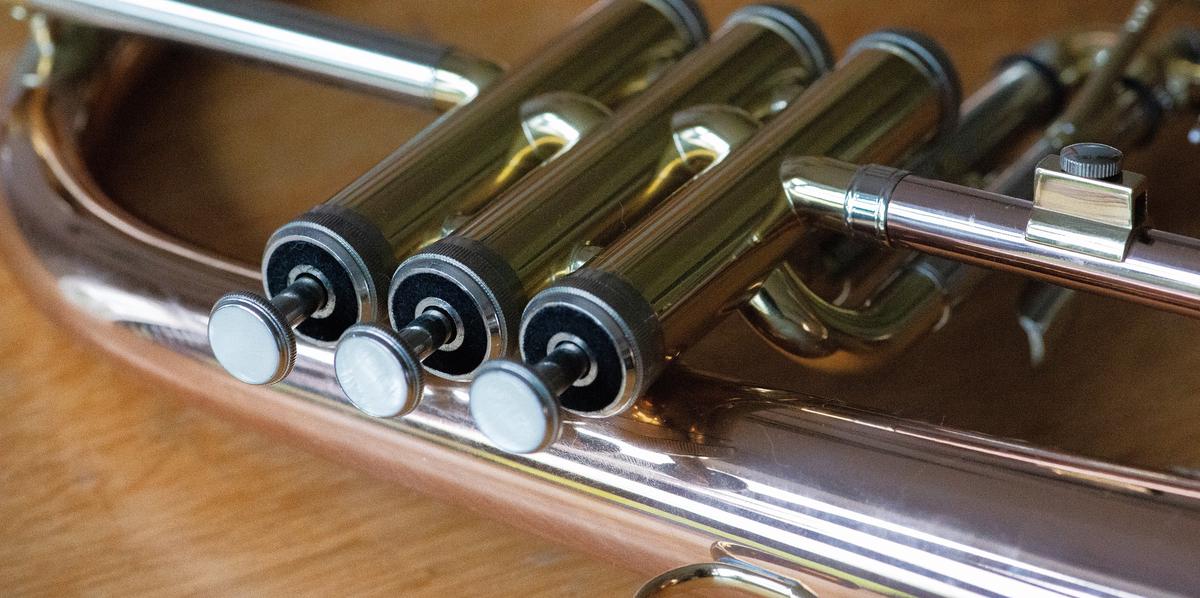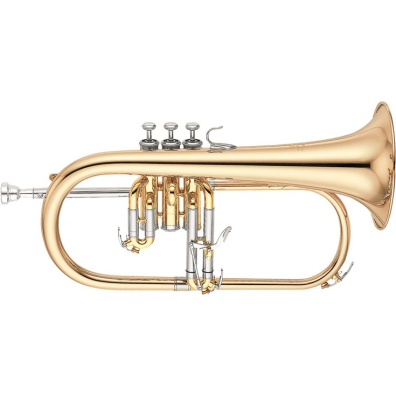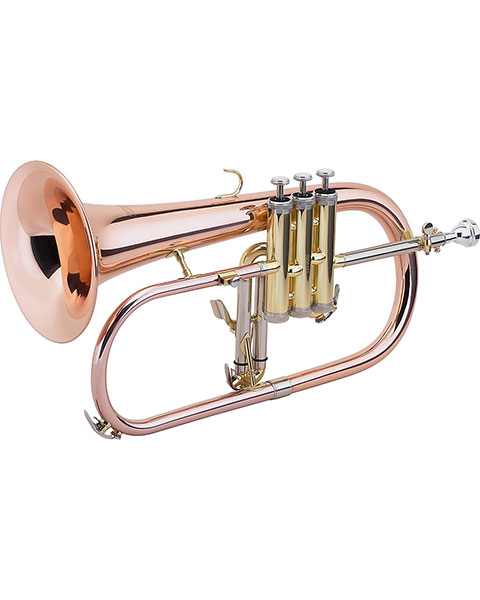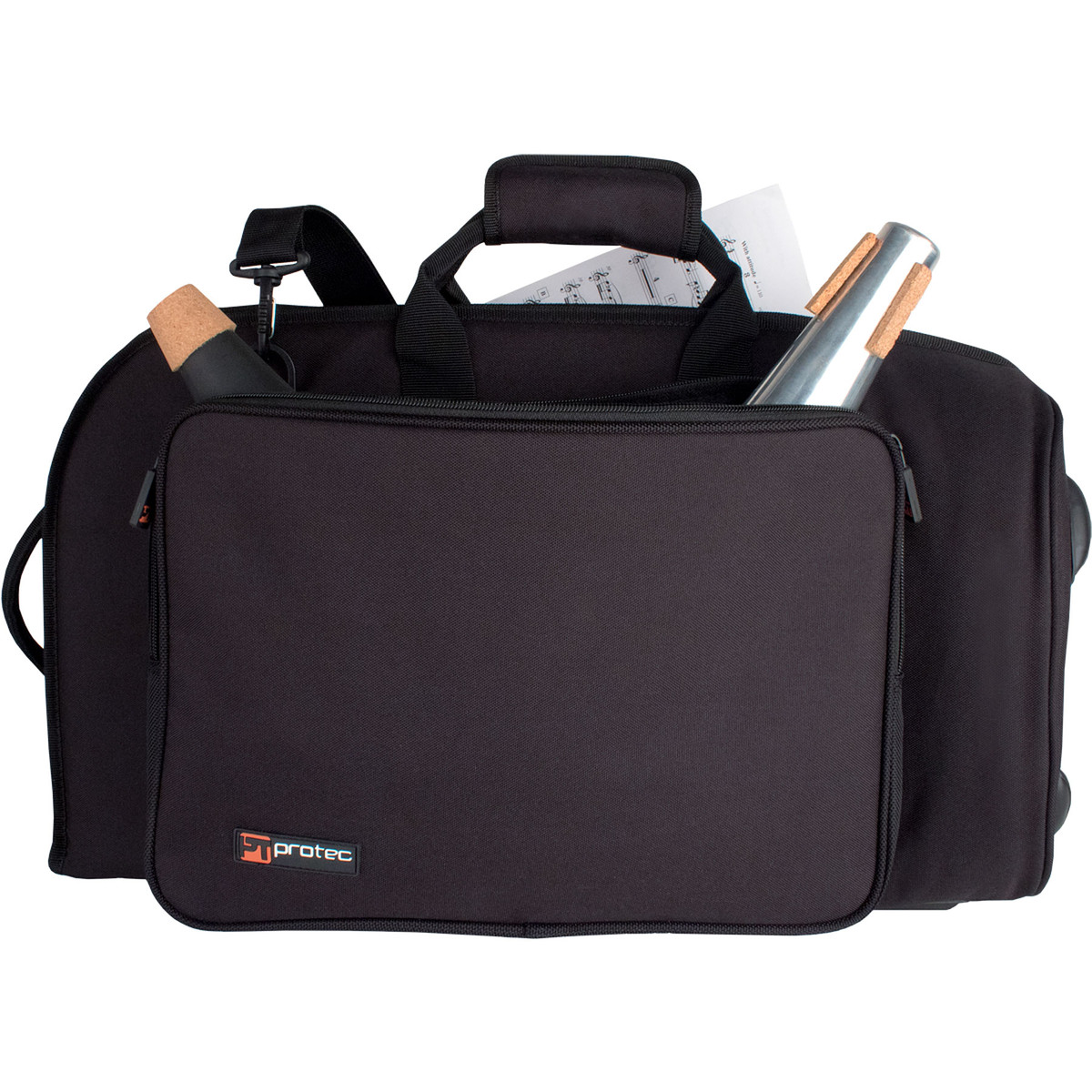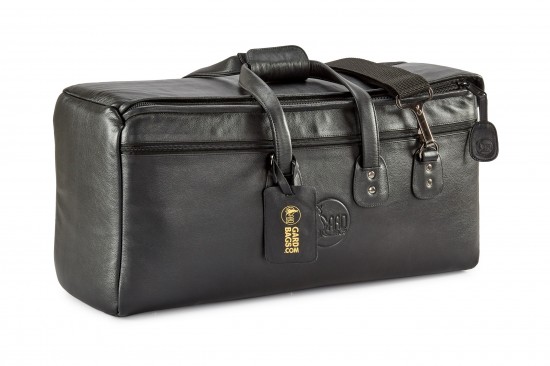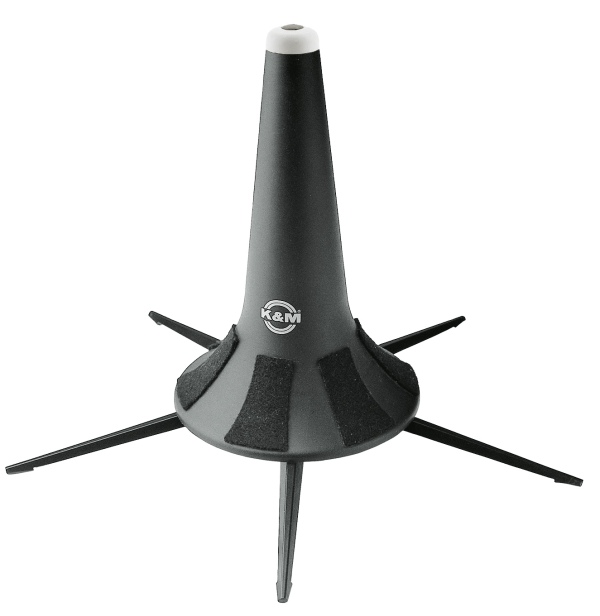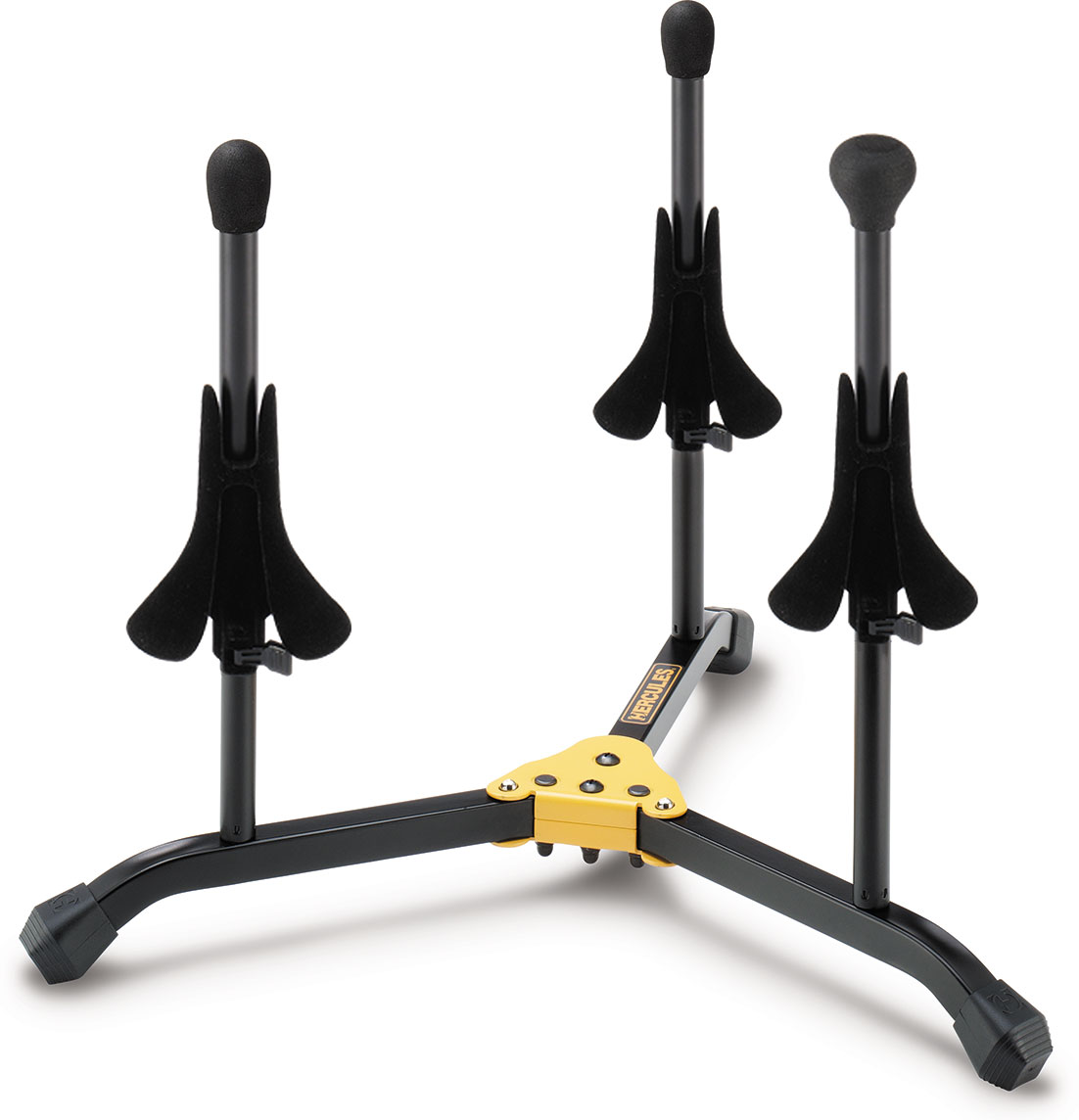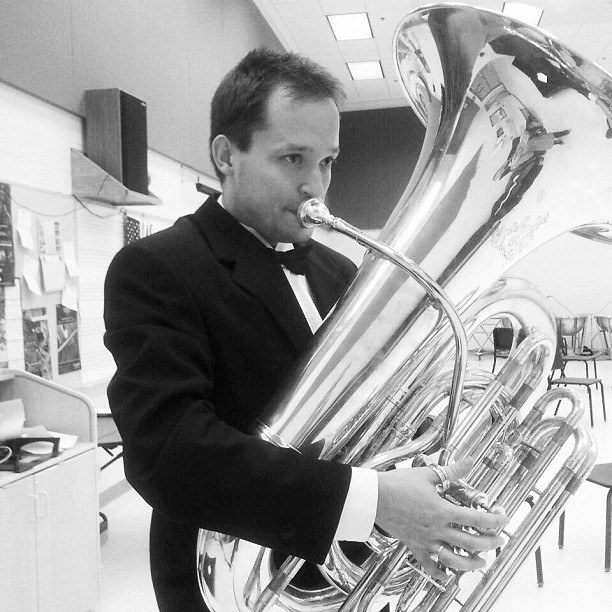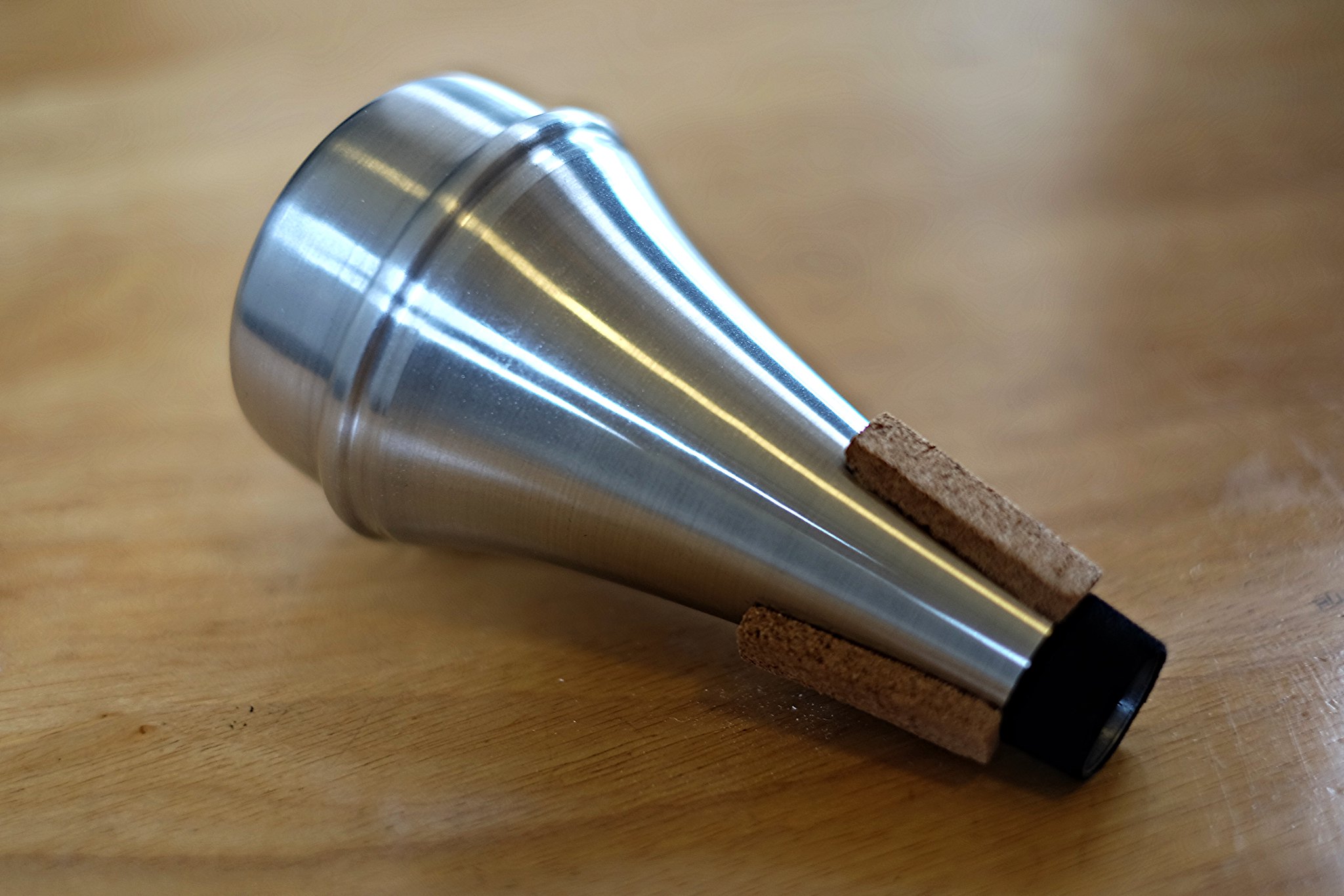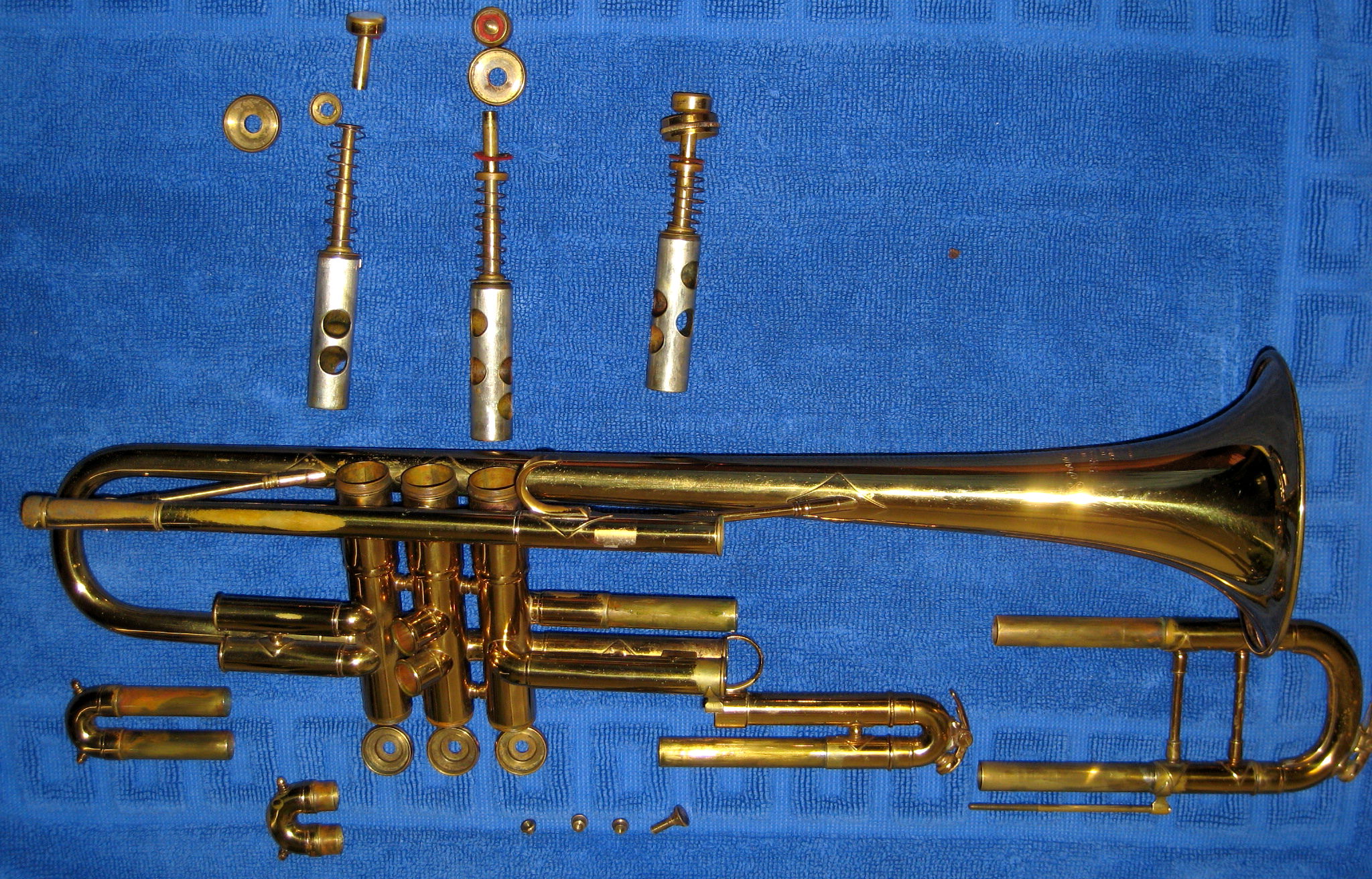The flugelhorn has risen to prominence in both jazz and classical music. In this article, we’ll discuss the flugelhorn’s role in music, the best flugelhorns and accessories available for purchase, and everything else you need to know about this beautiful instrument.
What Is A Flugelhorn?
A flugelhorn is a member of the trumpet family. What makes a flugelhorn unique is its iconic darker, mellow tone as compared to the trumpet.
Though there are some instrumentalists that are self-described “flugelhorn players,” the flugelhorn is typically played by trumpet players. For example, you typically wouldn’t start off playing a flugelhorn in a school band.
Rather, as you develop as a trumpet player, you might identify certain pieces in jazz band that require the use of a flugelhorn. In this case, it is common that the school owns a set of flugelhorns so that the section can match each other in timbre.
Flugelhorn Vs. Trumpet
The flugelhorn’s darker tonal quality is achieved primarily by the difference in bore between the two instruments. Whereas the trumpet has a cylindrical bore (keeping a relatively consistent diameter of tubing throughout the instrument), the flugelhorn features a conical bore (the diameter gradually expands as it moves towards the bell).
Cylindrical bore instruments are known for their direct, brassy qualities in instruments such as the trumpet and trombone. The conical bore, which the flugelhorn has, is associated with a mellower, rounder sound featured by instruments such as the French horn, euphonium, and tuba.
In addition to the bore, the mouthpiece also plays a significant role in distinguishing the trumpet and flugelhorn. In general, deeper cups are associated with a warmer sound. In the case of the flugelhorn, most players use a v-shaped mouthpiece, which is much deeper than the standard c-shaped cup of the trumpet mouthpiece.
But while the instruments have some differences, there are also many commonalities between the trumpet and flugelhorn. Despite the larger bell size and appearance of the flugelhorn, if you unravel the tubing of both the trumpet and flugelhorn, the length of the two is exactly the same.
Flugelhorn Intonation
One of the downsides of the flugelhorn is that they can potentially play out-of-tune. One of the ways that some manufacturers compensated for this is with the addition of a fourth valve. A 4 valve flugelhorn allows for alternate finger combinations to improve certain pitch tendencies.
An added benefit of the additional valve means that the flugelhorn can play additional notes in the low range of the instrument that are typically inaccessible with a three-valve flugelhorn.
Buying A Flugelhorn
When it comes to buying a flugelhorn, there are several high-quality options available. As you would expect with trumpets, there are reliable versions of flugelhorns from Yamaha and Bach, as well as higher-end custom models for the aspiring professional.
Yamaha Flugelhorn
For most people, a horn like the Yamaha 631 flugelhorn is going to be a safe bet. Especially if you are playing trumpet and alternating with flugel, this one is an easy transition going back and forth.
The 631 has a beautiful mellow sound that’s going to make it hard to ever go back to your trumpet again!
I’ve played Yamaha 631s and purchased several for my high school band students, and they’re a great addition to your trumpet arsenal.
Yamaha has an excellent reputation for consistency in their manufacturing process, so you’re much less likely to end up with a lemon of an instrument. And with great return policies of Woodwind & Brasswind, you know you’re not going to experience hassles if you do run into any issues while purchasing online.
Really, the only downside to the Yamahas are the sticker price. For a musician who is looking to be a doubler (trumpet & flugelhorn), I always go Yamaha. But if you’re just starting out or you think you might only get limited use out of your flugel, your budget might be a little more limited.
Allora Flugelhorn
If budget is your primary consideration, you’ll be able to save hundreds of dollars by purchasing a flugelhorn like this Allora model. The great part is that even at this lower price point, you’ll be able to get a nice mellow tone on the instrument.
But for full transparency, cheaper horns are not built with the same quality as you see in more reputable models. The two most common issues reported with this model are the reliability of the valves, and the lacquer wearing away after a shorter period of time.
When you’re paying just a fraction of the price of the Yamaha, these potential issues may be worth it, but it’s good to go into the buying process with all of the necessary information at your disposal.
My pro tip if you decide to purchase this horn is to get a better quality flugelhorn mouthpiece and not rely on the stock one that it ships with.
Used Flugelhorns For Sale
If you find yourself in the market for a used flugelhorn, there are lots of reputable discontinued models from manufacturers that have folded in recent years.
In 2019, legendary brass manufacturer Kanstul closed its doors. Many trumpet players in the profession swore by their Kanstul flugelhorns, so if you see one on Ebay or being sold locally, don’t hesitate to try one out.
Couesnon flugelhorns were some of the most prolific and affordable instruments sold in the U.S. earlier in the century. While the company was reorganized and still operates in France, it focuses more on brass band instruments. But you’ll still find a number of the Couesnon flugels floating around in used markets.
Plastic Flugelhorn
Another affordable option to consider is a plastic flugelhorn. With advancements in 3d printing and manufacturing, plastic instruments of all varieties are becoming more popular due to their appealing cost savings.
One possible advantage of a plastic flugelhorn is the less weight being supported by the hand, so if you are elderly or you experience hand or joint pain, this could be an option for you.
If the novelty of a plastic instrument is interesting to you and the cost savings is a prominent issue, you may consider trying an instrument like the Tromba flugelhorn. As with the Allora mentioned above, I recommend purchasing a more reliable metal mouthpiece.
Overall, if price is a limiting factor, my personal preference would be:
- Reputable used instrument
- Student line like Allora
- Plastic instrument
Since brass instruments retain some of their value over time, I would much prefer a quality instrument manufactured by a reputable manufacturer over some other options. But students might find that they prefer a shiny new instrument, or something lightweight that they can tool around with.
Flugelhorn Accessories
Now that you have a new flugelhorn in hand, you’ll also want to think about the different accessories you may need.
Flugelhorn Mouthpiece
As noted above, one of the substantial differences between trumpets and flugelhorns is the cup of the mouthpiece. Additionally, the shanks tend to be of different widths and tapered differently, so it is likely that your everyday trumpet mouthpiece will not fit into the flugelhorn.
It’s important to check to see which mouthpiece will fit into your horn, but typically I’d recommend replacing less expensive stock mouthpieces with a Bach or Yamaha equivalent flugelhorn mouthpiece.
Other notable mouthpieces include the Bobby Shew and Dennis Wick models.
Flugelhorn Case
The good news is that almost all flugelhorns ship with a case to help protect and carry the instrument. The downside is that they’re often bulky and unwieldy. If you’re just leaving your case at school or at home and rarely transport it to and from gigs, this might be all you need.
However, once you start thinking about everything else you need to bring to your gig (your trumpet, a handful of mutes, your sheet music, a stand, etc.) you may find that you want to upgrade your case to something a little more useful.
I’ve always enjoyed carrying around my horns in gig bags. While they don’t offer as much heavy-duty protection as a hard shell case, I really enjoy the convenience. And I typically find myself in a position carrying my horn to my car, and from the car to the gig. I'm typically not in a scenario where I envision a lot going wrong.
Protec makes a great line of affordable and lightweight gig bags. I particularly like the added pouch for mutes which makes it easy to manage everything I need for a gig.
If you want a single trumpet and flugelhorn case, Gard is a well-known brand amongst musicians. They have a fairly unique approach which “suspends” the instruments in the case, offering additional protection for the horns if you were to drop them while in the case.
If you’re a doubler, this is the perfect option for you.
Flugelhorn Stand
If you’re playing trumpet and flugelhorn on a gig, you’ll want a stand to set your flugelhorn on while you’re performing on trumpet. Is it possible to not use a stand? It is, but the number of accidents I’ve seen with instruments tipping over and denting certainly makes it not worth the risk.
I like these little K&M stands. They work with your flugel and your trumpet, have little bits of felt to prevent any scratching on the instrument, and with five legs, it makes it virtually impossible for the stand to tip over while in use.
What’s cool is that the legs of the stand fold up and can be inserted into the black stand. So it takes up virtually the amount of space of another mute and makes it easy to chuck in a bag when you’re done with the gig.
If you need something a little more rugged for home or studio use, the Hercules line-up is a great option as well. This particular model features three pegs which is touted for a trumpet, cornet, and flugelhorn, though in reality you could mount two trumpets and a flugel. The knob for the flugelhorn is a little larger than the trumpet/corner ones.
The advantages are the ruggedness and ability to mount multiple horns but at the expensive of convenience and light weight. Some trumpet players opt to use this kind of a stand in a more dedicated setup, while using the K&M for quick gigs.
Famous Flugelhorn Players
There are so many great jazz players that double on trumpet and flugelhorn. Here are a bunch to check out:
- Art Farmer
- Roy Hargrove
- Tom Harrell
- Thad Jones
- Jimmy Owens (played a cool rotary valve flugelhorn)
- Paul Tynan
- Kenny Wheeler
- Clark Terry
I would be remiss if I did not mention Chuck Mangione’s flugelhorn contributions to the world. It was Mangione’s iconic flugelhorn piece, “Feels So Good” that really brought the flugelhorn into mainstream culture and branded Mangione as primarily a flugelhorn player.
Other Common Questions
What key is the flugelhorn in?
Like the trumpet, the flugelhorn is pitched in Bb.
What is the difference between a mellophone vs. flugelhorn?
A mellophone is used by French horn players as a front-facing instrument in a marching band. Like the horn, it is pitched in the key of F vs. the flugelhorn in Bb. Because the mellophone is lower, the instrument is also longer and heavier than the flugelhorn.
When was the flugelhorn invented?
The flügelhorn was invented in the 1830s in Austria, and was designed for use in military bands.
Are there flugelhorn mutes?
While the usage of mutes is less common with flugelhorn than with trumpet, they are called for in some jazz music. Flugelhorns typically require larger mutes specially designed for the instrument since the bell is larger than that of the trumpet.
Is the flugelhorn played outside of jazz?
The flugelhorn is occasionally used outside of jazz in wind band and orchestral music to add a special color or effect. Flugelhorns can be heard in Resphigi’s Pines of Rome in one of the off-stage parts.
Occasionally it is also used in drum corps, such as this Bluecoats 2016 flugelhorn solo:
What is the flugelhorn range?
The flugelhorn standard range is roughly the same as the trumpet, from F# below the treble clef to C above the treble clef.
An addition of a fourth valve will technically allow the instrument to extend the low range, but the more practical purpose is to help with intonation.
While lead trumpet players consistently look to push the upper range of the trumpet, this is less common with the flugelhorn; one rarely thinks of a “screaming” flugelhorn solo.
